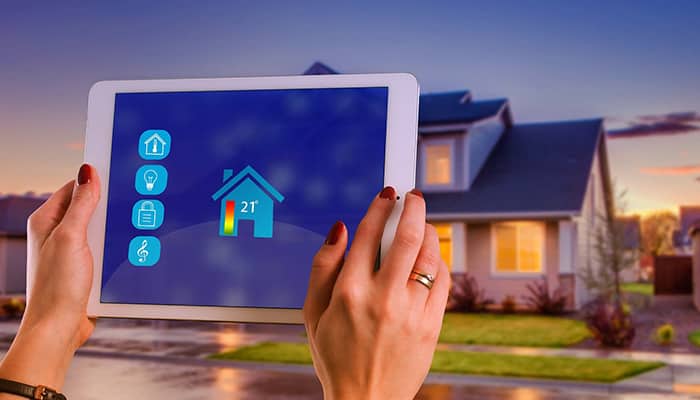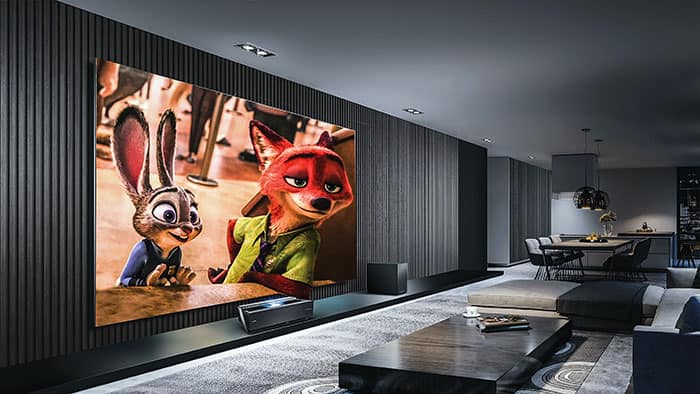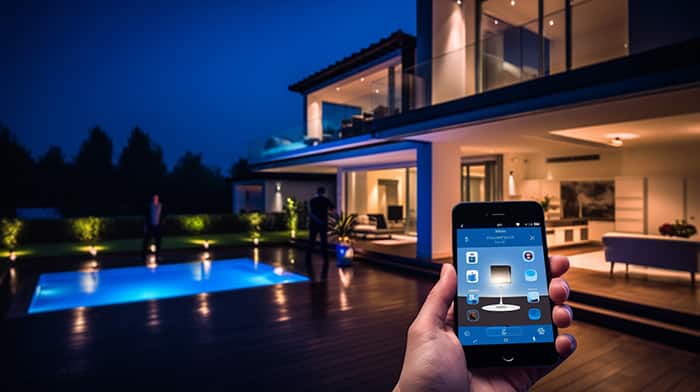The Evolution of Technology: How Smart Homes are Changing the Way We Live

The concept of smart homes is not new, but recent technological advancements have made it a reality. Today, the power of the internet, artificial intelligence, and machine learning is being harnessed to create homes that are not just comfortable and convenient, but also energy efficient and secure. The journey of the smart home revolution has just begun, but its impact is already being felt in our daily lives. As a technology enthusiast, I have been closely following the evolution of smart homes, and in this article, I will share with you my insights into how smart homes are changing the way we live.
What is a Smart Home?

A smart home refers to a residence that uses smart devices and technology to enhance and automate various aspects of daily life. The goal of a smart home is to provide homeowners with increased efficiency, security, comfort, and energy savings through the integration of interconnected devices and systems. These devices are often connected to a central hub or a smart home platform, allowing users to control and monitor them remotely, typically through a smartphone or tablet.
Key components of a smart home may include:
- Smart Lighting: Lights that can be controlled remotely and often customized for different scenarios or moods.
- Smart Thermostats: Devices that regulate heating, ventilation, and air conditioning (HVAC) systems to optimize energy usage and maintain comfortable temperatures.
- Smart Security Systems: Cameras, doorbell cameras, smart locks, and sensors that enhance home security and allow remote monitoring.
- Smart Appliances: Kitchen and household appliances that can be controlled and monitored through a smart home network.
- Home Automation Systems: Centralized systems or hubs that connect and control various smart devices in the home.
- Smart Speakers and Voice Assistants: Devices like Amazon Echo or Google Home that use voice commands to control smart home devices and provide information.
- Smart Entertainment Systems: Smart TVs, audio systems, and streaming devices that can be integrated into the smart home network.
- Smart Sensors: Devices that detect and respond to changes in the environment, such as motion sensors, door/window sensors, and environmental sensors.
- Smart Cameras: Security cameras that can be monitored remotely and may include features like facial recognition.
- Smart Energy Management: Systems that monitor and optimize energy usage within the home.
The interconnectivity of these devices and the ability to control them remotely contribute to the convenience and efficiency of smart homes. Smart home technology continues to evolve, with new devices and features regularly introduced to the market.
The History of Smart Homes

The concept of smart homes has been around for decades. The idea of a home that can perform tasks automatically was first envisioned in the early 20th century, with the advent of electrical appliances and the automation of industrial processes. However, it wasn’t until the late 20th century that the concept started to take shape, thanks to the birth of the internet and the proliferation of personal computers.
The first generation of smart homes relied on wired connections and were expensive and complex to install. These systems were primarily focused on automating security and lighting systems and were not user-friendly. However, the advent of wireless technology and the internet of things (IoT) in the early 21st century changed the game. Smart devices became cheaper, easier to install and use, and could be controlled remotely.
Today, smart homes have evolved beyond standalone devices and systems. They are now integrated ecosystems that leverage artificial intelligence and machine learning to offer personalized and proactive experiences. The smart home of today is not just a collection of smart devices; it’s a living, learning entity that adapts to the lifestyle of its inhabitants.
How Smart Homes are Changing the Way We Live
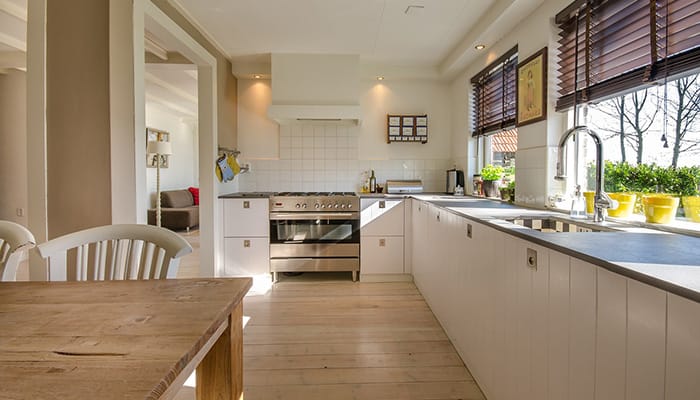
Smart homes are not just about convenience and comfort; they are changing the very fabric of our daily lives. They are transforming how we interact with our homes and how we manage our daily tasks. One of the key ways smart homes are changing our lives is by making our homes more energy efficient. Smart thermostats, for example, can learn our heating and cooling preferences and adjust the temperature automatically to save energy. Smart lighting systems can turn off lights when no one is in the room, and smart plugs can turn off appliances when they are not in use.
Smart homes are also enhancing our security. Smart security systems can monitor our homes round the clock, alert us to any unusual activity, and even call the authorities in case of an emergency. Smart locks can allow us to control who enters our home and when, while smart cameras can let us keep an eye on our home from anywhere in the world.
The Impact of Technology on Home Automation
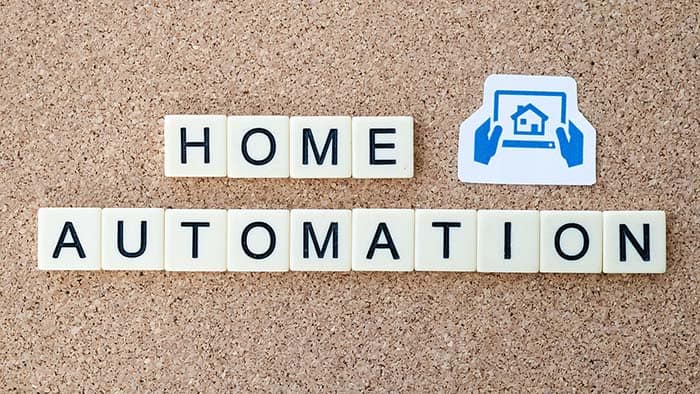
Technology has been the driving force behind the evolution of smart homes. The internet, artificial intelligence, machine learning, and the internet of things (IoT) have been instrumental in transforming the concept of smart homes from a futuristic fantasy to a modern-day reality.
The internet has enabled smart devices to be connected and controlled remotely, while artificial intelligence and machine learning have enabled these devices to learn from our habits and adapt their settings accordingly. The IoT has allowed for the integration of various smart devices into a cohesive ecosystem, enhancing the functionality and convenience of smart homes.
The impact of technology on home automation is not just about making our lives easier; it’s about making our homes smarter. It’s about creating a living environment that is responsive and adaptive, one that enhances our comfort, security, and energy efficiency.
Smart Homes Security and Energy Efficiency

Energy efficiency is one of the key benefits of smart homes. By automating and optimizing various tasks, smart homes can significantly reduce energy consumption and contribute to a more sustainable future.
Smart thermostats, for example, can learn our heating and cooling habits and adjust the temperature accordingly, reducing energy waste. Smart lighting systems can automatically turn off lights when no one is in the room, while smart plugs can turn off appliances when they are not in use. By providing real-time energy usage data, smart homes can also help us understand our energy consumption patterns and make more informed decisions about energy use. In this way, smart homes not only save energy but also help us become more conscious of our energy use.
Security is another area where smart homes are making a significant impact. Smart security systems can provide round-the-clock monitoring, alert us to any unusual activity, and even call the authorities in case of an emergency. Smart locks can allow us to control who enters our home and when, enhancing our security and peace of mind. Smart cameras can let us keep an eye on our home from anywhere in the world, providing an additional layer of security.
However, as with any technology, smart home security comes with its share of challenges. The interconnected nature of smart homes makes them vulnerable to cyber threats, requiring robust security measures to protect against potential attacks.
Challenges and Solutions in Smart Home Technology

While smart homes offer numerous benefits, they also pose several challenges. Security is a major concern, given the interconnected nature of smart homes. The risk of cyber attacks is high, and robust security measures are necessary to protect against potential threats.
| Challenge | Solution |
|---|---|
| Interoperability: | Devices from different manufacturers may not work seamlessly together. |
| Security Concerns: | Smart homes may be vulnerable to hacking and unauthorized access. |
| Privacy Issues: | The collection and use of personal data by smart devices raise privacy concerns. |
| Reliability of Connectivity: | Issues with Wi-Fi or other connectivity options can lead to unreliable performance. |
| Complex Installation: | Users may find the setup and integration of smart devices complex and time-consuming. |
| High Initial Costs: | The cost of purchasing and installing smart devices can be a barrier for some users. |
| Limited Standardization: | Lack of universal standards can hinder the development of a cohesive smart home ecosystem. |
| Energy Consumption: | Continuous operation of smart devices can contribute to increased energy consumption. |
| Device Compatibility: | New devices may not be compatible with older smart home infrastructure. |
| Data Overload: | The abundance of data generated by smart devices can be overwhelming and challenging to manage. |
However, solutions are being developed to address these challenges. For instance, the use of blockchain technology could enhance the security and privacy of smart homes by providing a secure and transparent platform for data exchange. Artificial intelligence and machine learning could also play a role in enhancing the security of smart homes by detecting and responding to unusual activity.
The Future of Living with Smart Homes
The evolution of technology has brought us to the cusp of a new era – an era where our homes are not just places to live, but intelligent entities that adapt to our lifestyle and enhance our comfort, convenience, security, and energy efficiency. This is the era of smart homes.
As we look to the future, we can expect to see more advancements in smart home technology. With the integration of artificial intelligence, machine learning, voice recognition, and blockchain, our homes will become even smarter, offering more personalized and proactive experiences.
However, as with any technology, smart homes come with their share of challenges. As we embrace the smart home revolution, it’s crucial that we address these challenges and ensure that our smart homes are secure and respect our privacy.
The journey of the smart home revolution has just begun, but its impact is already being felt in our daily lives. As we move forward, I am excited to see how smart homes will continue to redefine the way we live. The future of living with smart homes is here, and it’s smarter than ever.
FAQs
Are smart homes worth it?
Smart homes can offer increased convenience, energy efficiency, and security. However, the value depends on individual preferences and needs.
What is the difference between a smart home and a normal home?
A smart home is equipped with devices and systems connected to a central hub, allowing remote control and automation. In contrast, a normal home lacks these interconnected features.
What makes a home a smart home?
A smart home integrates devices like smart thermostats, lights, security cameras, and other IoT-enabled appliances, allowing automation and remote control via a central system or smartphone app.
What is the current situation of AI in smart homes?
AI plays a significant role in smart homes, enabling personalized automation, voice recognition, and predictive analysis to enhance the overall user experience.
What are the problems with smart homes?
Challenges may include privacy concerns, interoperability issues among devices, potential security vulnerabilities, and the initial cost of implementing smart home technology.
What are the disadvantages of smart home?
Disadvantages can include the learning curve for users, dependency on technology, and the possibility of system malfunctions or cyber threats.
What is the biggest danger of the smart home?
The main danger is the potential vulnerability to cybersecurity threats, which could compromise the privacy and security of the residents.
Are smart homes vulnerable?
Smart homes can be vulnerable to cyberattacks if not properly secured. Regular updates, strong passwords, and secure network configurations are essential to mitigate these risks.
Is a smart home sustainable?
Smart homes can contribute to sustainability by optimizing energy usage through smart devices, promoting efficiency, and reducing environmental impact.
- Maximizing Privacy: Essential Tips for Securing Your Smart Home - February 25, 2024
- Best Home Smart Locks in 2024 - January 2, 2024
- Home Centric Vaultek Smart Station - December 17, 2023

